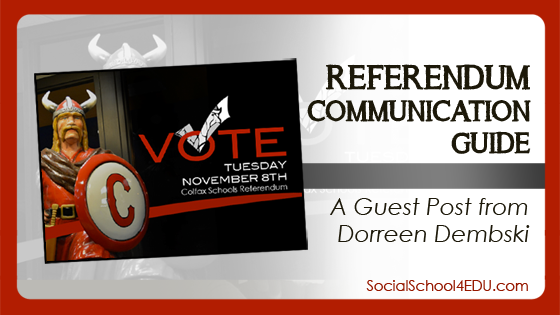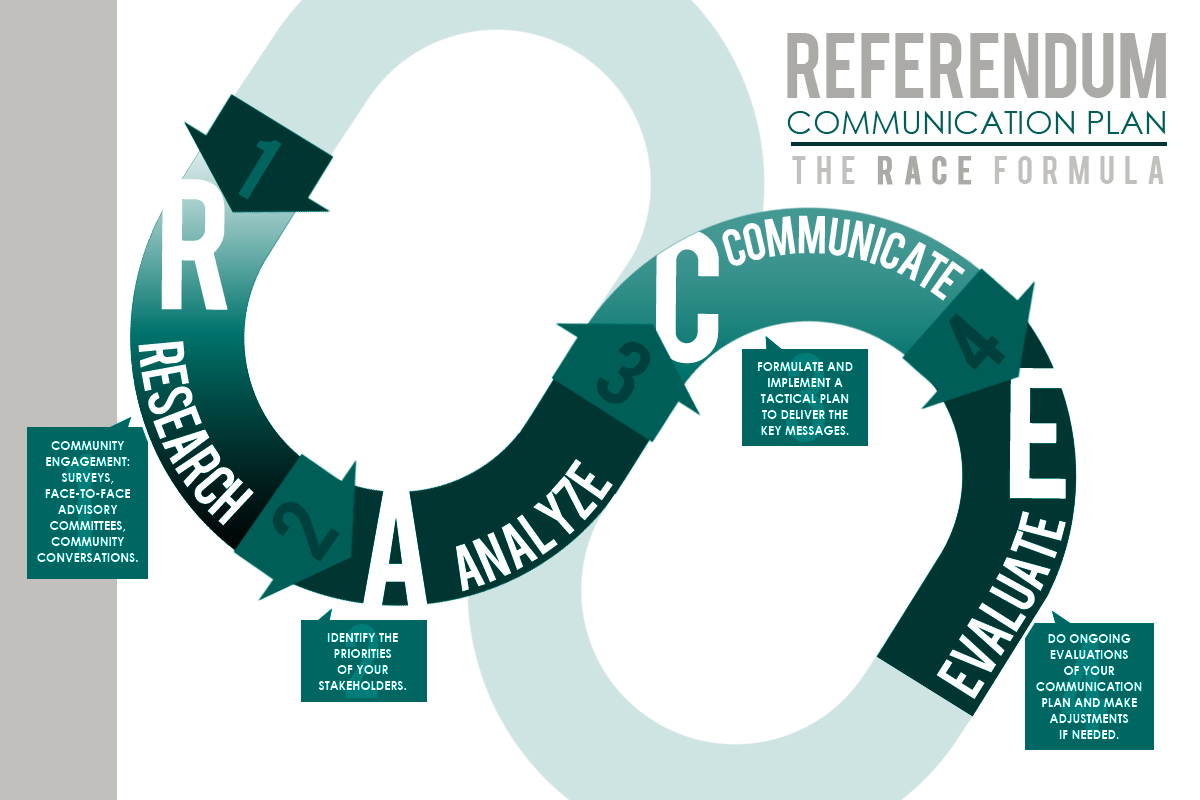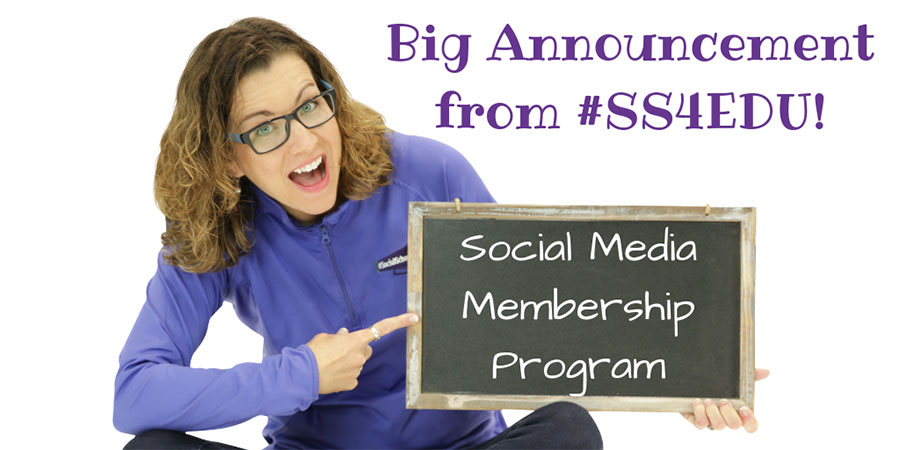Communication with the public plays a pivotal role in any school district. It is the cornerstone of building relationships with your constituents. The true test of how well you are doing often is presented when you must go to the ballot to ask your community for funds. Whether it is for operational or facility needs, you need to ensure the voters know why you need the money.
To share insight on this topic, I reached out to an experienced school communications professional, Dorreen Dembski. She has worked as a communication director for a large public school district and now helps consult with schools on various communication projects both large and small. She is recognized by the National School Public Relations Association as a legacy leader and has earned a reputation as a reliable, knowledgeable and passionate communication professional.
Dorreen shared:
A referendum communication plan should feel more like a special news bulletin within your community, rather than the only news your district shares. Schools and their employees, as public entities, cannot promote or discourage voters to be for or against a referendum. The role of communication before a referendum vote is to inform and educate about the needs of the district and the proposed solutions presented in the referendum.
Long before a referendum, a strategic organizational communication plan should establish well-worn communication paths between your school district and your stakeholders. Then, when a referendum comes onto the scene, the pre-referendum information is a special topic plan within an overall strategy.
Every communication plan, including referendum communication plans, has four key components. Let’s apply the RACE formula to a referendum communication plan.
Research (R)
Community engagement: surveys, face-to-face advisory committees, community conversations.
About a year in advance of a referendum on the ballot, begin with community engagement. What may seem like obvious needs to district leaders – new roofs, maintenance needs, and operating funds for programming – are not at all obvious to the general public. Community engagement, at its core, builds awareness and collects feedback about potential projects. This engagement should help establish mutual understanding between key school decision-makers and the public about viewpoints, potential questions, and priorities. There is a skill to effective and authentic community engagement, so seek professional advice. Many districts use surveys. I believe face-to-face opportunities, such as advisory committees, are very effective, too. Remember to include all your stakeholders – staff, parents, community members at large, business owners or representatives, and other elected officials – in outreach efforts.
Analyze (A)
Identify the priorities of your stakeholders.
Try to discover the community’s priorities through careful and objective analysis of the survey results and/or outcomes of face-to-face meetings. Good listening is required. If you’re open to listening objectively, well-done community engagement will tell you the community’s priorities for your district, and what community members are willing to support for your schools. Listening isn’t easy or quick and when you truly listen, you may change your mind. However, listening is essential to finding a referendum proposal that addresses the community’s priorities.
Communicate (C)
Formulate and implement a tactical plan to deliver the key messages.
This is where some districts jump into pre-referendum communication. Actually, this is the third step. Use your research and analysis to develop an effective communication plan.
- Develop key, consistent messages. Once the referendum resolution has been decided, communicate how the projects and their components present solutions for the district’s needs, addresses community priorities, and present an educational value to the community. (All staff and leaders need to speak the same language so involve and inform staff of the solutions, too!)
- Identify the many channels of communication you will use.
- Fact sheet: A fact sheet grounds the key messages into one single document.
- Website: Dedicate a section of the website to store all the materials for a voter.
- Social media plan: Ideas for social media posts include “Did you know” posts about your referendum needs and solutions; announcements of where to find information; pictures – lots and lots of pictures; answers to frequently asked questions.
- Videos: Think about how to incorporate short videos into your overall and social media plan.
- Other communication tools: E-newsletters, print flyers, mailers, information open houses, presentation boards and posters, frequently asked questions, and an email address where the public can submit questions are all helpful. All communication tools are integrated into an overall calendar and used to organize and implement your communication plan.
- Deliver your key messages through various communication channels.
A communication plan will have many prongs because of the diverse communication tools used by your diverse audiences. Think carefully about all stakeholders in your community and how to best reach them. Carefully implement the plan.
Evaluate (E)
Just as you might taste-test a soup while it simmers on the stove, and add a few ingredients to improve it; so too it is important to regularly evaluate the communication plan as it is being implemented. Has a pattern of questions emerged in the community that were not on your radar? How will you proactively provide the answers via social media or your print campaign? Evaluation of the communication plan is ongoing and adjustments may be necessary.
In the end, a referendum is a special topic communication plan within your organizational communication strategy. Like all communication plans it follows the RACE formula – research, analysis, communicate, evaluate. Remember – your purpose is to inform the public, so simple language and transparency is key.
For more information on Dorreen, please visit www.ddcommunicationservices.com.
There is also a recorded webinar on this topic that can be accessed by members only. If you are interested in joining us, learn more here.





